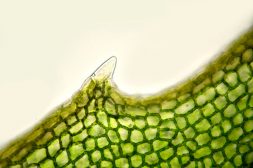Definition
noun
The type of phloem derived from the secondary meristems of a vascular plant
Supplement
The phloem is a vascular tissue that is responsible for translocation. Translocation pertains to the process that transports the photosynthate materials to different parts of a vascular plant. The phloem may be primary or secondary depending on which type of growth it came from or on which type of cambia (i.e. whether procambium or vascular cambium) it came from.
The secondary phloem is a type of phloem that forms from the vascular cambium during the secondary growth. The secondary growth is responsible for the growth in girth in plants, especially trees. The vascular cambium is the meristematic tissue involved in this type of growth. Some of the cells produced by the vascular cambium may differentiate into secondary phloem (others as secondary xylem).
The secondary phloem is located in the stems and roots. It forms inner to the primary phloem. A radial system of phloem rays occurs in the secondary phloem. In terms of cellular components, the secondary phloem has more phloem fibers (occur in bands or patches, and referred to as bast fibers), sieve tubes, phloem parenchyma, and sclereids than the primary phloem. The sieve tubes of secondary phloem are shorter but wider. Thus, there is a rather rapid flow of photosynthate across the sieve tubes of secondary phloem than those of primary phloem.
Also called:
- bast
- liber
See also:






